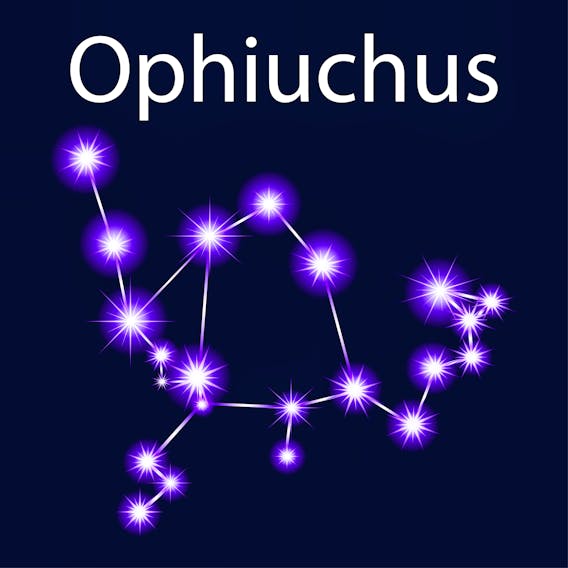With the Summer Solstice, which marks the official start to summer in the northern hemisphere, set to occur at 6:44 p.m. ADT on Saturday, June 20, 2020, it's time to have a look at the night sky's summer constellations. First, though, a bit about solstices.
The term "solstice" (from the Latin solstitium - itself from sol (sun) and stitium (to stop or stand still)) refers to the moment when the sun appears to stop its movement (relative to the eastern horizon) in the sky.
Of course, the sun is not actually moving; what is really happening is that, on the date of the summer solstice, the Earth's north pole reaches its maximum tilt (23 degrees) towards the sun. At this point, as seen from Earth, the sun appears to reach its highest and most northern point in the northeastern sky for the year. Due to the maximum tilt of the northern hemisphere towards the sun, it receives more direct sunlight, resulting in our warm, summer weather.
Conversely, at the time of the winter solstice in December, the Earth's north pole is at its maximum tilt away from the sun, and the Sun is at its lowest and most southern point in the southeastern sky for the year. The northern hemisphere receives less direct sunlight at this time, resulting in colder, wintery weather. The actual date of the summer solstice varies from year-to-year, some years on June 20 (as this year), other years on June 21, and upon occasion, June 22. The summer solstice results in the longest day (the longest period of sunlight) and the shortest night.
After the summer solstice, the sun begins its apparent movement back across the eastern sky, heading towards its most southern point in the southeastern sky at the winter solstice in December. Quick astro-fact: at the moment of the summer solstice, your shadow is at its shortest at local or solar noon (when the sun crosses the meridian - the imaginary line between the north and south poles, and is at its highest point in the sky).
Summer constellations
Having discussed the constellation of Hercules - the Hero in one of my February 2020 columns, I'll proceed on to another of the summer constellations. Visible as a large, scattered constellation in the south-southeast when the sky darkens by about 10 p.m., Ophiuchus - the Serpent Bearer was initially identified with the Greek god, Apollo, later becoming associated with the famous Roman physician, Asciepius, before finally being designated as the god of medicine.
Ophiuchus was one of the first constellations catalogued by the famous Greek astronomer, Ptolemy (100-170 AD). Drawings of the constellation show a man holding a large snake coiled around his waist, with the head and tail extending outward on each side. Represented by the constellation of Serpens - the Serpent, the snake is divided into two parts - Serpens Caput (the snake's head, on the right) and Serpens Cauda (the snake's tail, on the left). Thus, the staff entwined by two snakes became the modern symbol of medicine.
Interestingly, one of the daughters of Ophiuchus was named Hygieia, the goddess of cleanliness, from whom we get our modern word "hygiene" - the practice of good health through cleanliness. There are a handful of beautiful globular clusters (M9, M10, M12, M14, M19 and M62) in Ophiuchus, all visible in binoculars and small scopes with a clear sky.
This week's sky
Mercury is not visible during the coming week. Bright Jupiter (magnitude - 2.6) is visible about seven degrees (a little less than a hand's width at arm's length) above the southeast horizon shortly before midnight. It will reach an altitude of 22 degrees above the southern horizon before being lost from view shortly before 5 a.m.
Saturn (magnitude 0.4) appears 10 degrees (a hand's width at arm's length) above the southeast horizon shortly after midnight, reaching about 23 degrees above the southern horizon before fading around 4:40 a.m.
Mars (magnitude -0.2) makes its appearance around 1:30 a.m. in the southeast sky, reaching a height of 28 degrees above the south-east horizon before disappearing from view by 4:45 a.m.
If you have an unobstructed view of the eastern horizon, and the weather cooperates, you might have a chance of catching a glimpse of Venus (magnitude -3.9), now our "morning star", just above the eastern horizon an hour before sunrise.
Look for the waning crescent moon to the upper right of Venus on the mornings of June 17-18, and just to the lower left of Venus on June 19. The Pleiades ("The Seven Sisters") open star cluster sits directly above Venus.
Until next week, clear skies.
Events
June 20 - Summer solstice
June 21 - New moon
Glenn K. Roberts lives in Stratford, P.E.I., and has been an avid amateur astronomer since he was a small child. He welcomes comments from readers, and anyone who would like to do so is encouraged to email him at [email protected].









